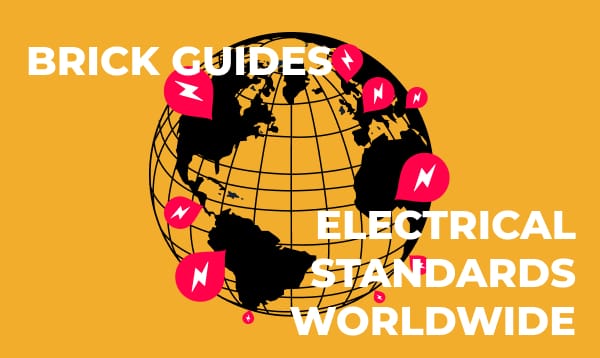Navigating Electrical Standards Worldwide: A Traveler's Guide
Travel smart—know plug types, voltage, and standards before you go! Avoid gadget grief with our global guide.

Ever wondered why your charger doesn't quite fit when you're abroad? It's all about electrical standards, which vary from country to country. Understanding these differences can save you from a world of frustration. Join us as we explore insights into electrical standards from various corners of the globe, helping you plug in with ease wherever your travels take you.
Electrical Standards by Destination:
Understanding the Table:
- Destination: This column lists the countries or destinations covered in the table.
- Plug Voltage (Volts): This refers to the standard voltage used in electrical outlets in the respective countries. Voltage is the force that pushes electricity through a conductor, measured in volts (V).
- Plug Type(s): Different countries use different plug types, which determine the physical connection between the electrical device and the outlet. Plug types are identified by letters and may include various configurations of pins and sockets.
- Frequency (Hertz): Frequency refers to the number of times alternating current (AC) cycles per second. In electrical systems, frequency is measured in Hertz (Hz), and it affects the performance of devices that rely on alternating current.
- Standardization Organization: This column mentions the organizations responsible for establishing and maintaining electrical standards within each country. These organizations ensure that electrical systems are safe, reliable, and compatible with international norms.
| Location | Plug Voltage (Volts) | Plug Type(s) | Frequency (Hertz) | Standardization Organization |
|---|---|---|---|---|
| United States | 120 | Type A, B | 60 | ANSI, CSA |
| Canada | 120 | Type A, B | 60 | CSA |
| Mexico | 127 | Type A, B | 60 | NOM |
| United Kingdom | 230 | Type G | 50 | BS, CENELEC |
| Germany | 230 | Type C, F | 50 | DIN |
| France | 230 | Type C, E | 50 | NF |
| China | 220 | Type A, C, I | 50 | GB |
| Japan | 100 | Type A, B | 50/60 | JIS |
| Australia | 230 | Type I | 50 | AS, AS/NZS |
| Brazil | 127/220 | Type A, B, C, N | 60 | ABNT |
| India | 230 | Type C, D | 50 | IS |
| South Africa | 230 | Type C, M | 50 | SABS |
| Saudi Arabia | 230 | Type A, B, G | 60 | SASO |
| Russia | 230 | Type C, F | 50 | GOST |
| Argentina | 220 | Type C, I | 50 | IRAM |
| Italy | 230 | Type C, F, L | 50 | CEI |
| Spain | 230 | Type C, F | 50 | UNE |
| Netherlands | 230 | Type C, F | 50 | NEN |
| Sweden | 230 | Type C, F | 50 | SS |
| Switzerland | 230 | Type C, J | 50 | SEV |
| Singapore | 230 | Type G | 50 | SS |
| South Korea | 220 | Type C, F | 60 | KS |
| Thailand | 220 | Type A, B, C, O | 50 | TISI |
| Turkey | 230 | Type C, F | 50 | TS |
Country insights for plugs, sockets, voltages, and other electrical standards.
Thailand:
In Thailand, you'll find plug voltages typically at 220 volts with a frequency of 50 Hertz. Plug types vary but commonly include Type A, B, C, and O. TISI ensures standards are maintained for electrical safety and efficiency.
India:
India operates on a plug voltage of 230 volts with a frequency of 50 Hertz. Plug types commonly used are Type C and D. The IS standards ensure electrical safety and compatibility across the country.
Turkey:
Turkey follows a plug voltage of 230 volts with a frequency of 50 Hertz. Plug types are typically Type C and F. TS sets the standards for electrical safety and efficiency in Turkey.
Mexico:
Mexico's plug voltage is around 127 volts, with a frequency of 60 Hertz. Common plug types include Type A and B. NOM ensures adherence to electrical standards across the country.
More like this?
